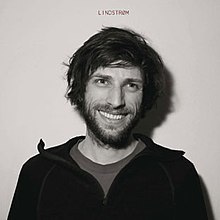Where You Go I Go Too
| Where You Go I Go Too | ||||
|---|---|---|---|---|
 |
||||
| Studio album by Lindstrøm | ||||
| Released | August 18, 2008 | |||
| Genre | Space disco | |||
| Length | 55:06 | |||
| Label | Smalltown Supersound | |||
| Producer | Lindstrøm | |||
| Lindstrøm chronology | ||||
|
||||
| Professional ratings | |
|---|---|
| Aggregate scores | |
| Source | Rating |
| Metacritic | 82/100 |
| Review scores | |
| Source | Rating |
| AllMusic | |
| The A.V. Club | B− |
| The Boston Phoenix | |
| The Guardian | |
| Now | 4/5 |
| Pitchfork Media | 8.6/10 |
| PopMatters | 7/10 |
| Spin | |
| Uncut | |
| URB | |
Where You Go I Go Too is the first studio album by Norwegian electronica artist Hans-Peter Lindstrøm. It was first released in the United Kingdom on August 18, 2008 and was subsequently released the next day in the United States. The album comprises three tracks, roughly 30, 10, and 15 minutes in length. Where You Go I Go Too is usually labeled "space disco" due to its "spacey, psychedelic" feel and four-to-the-floor beats.
Production of the album followed the 2006 release of It's a Feedelity Affair, a compilation of singles. Lindstrøm had become dissatisfied with simply producing remixes and average length songs, which led to experimentation with lengthy tracks. The album received positive reviews from critics, who praised its slick production values and epic scope. At the 2009 Spellemannprisen award ceremony in Norway, the record won the award for "best electronica album".
Following the release of It's a Feedelity Affair in 2006, Lindstrøm had become tired of producing dance remixes and average length vocal pieces. He began giving the artists and labels mixes with slower tempos. Lindstrøm also felt he was unwisely incorporating musical ideas into remixes instead of original works, which led to experiments with lengthier tracks for an original album. Four to five tracks were originally envisioned for Where You Go I Go Too, but only three were chosen.
The title track was a time-consuming project; Lindstrøm called it a "nightmare to finish." The song comprised over 70 layers of sound and spanned almost 30 minutes. Around half the sound consisted of live performances, which Lindstrøm found difficult to merge with the electronic portions. After changing the music, he would usually listen to the entire song and evaluate the change. The repeated listens took a toll: "I needed to listen to 30 minutes of music every time I did something," said Lindstrom "So I'll never gonna [sic] do it again." Despite this, he enjoyed working with extended songs because it allowed them to evolve and move at a slow pace.
...
Wikipedia
